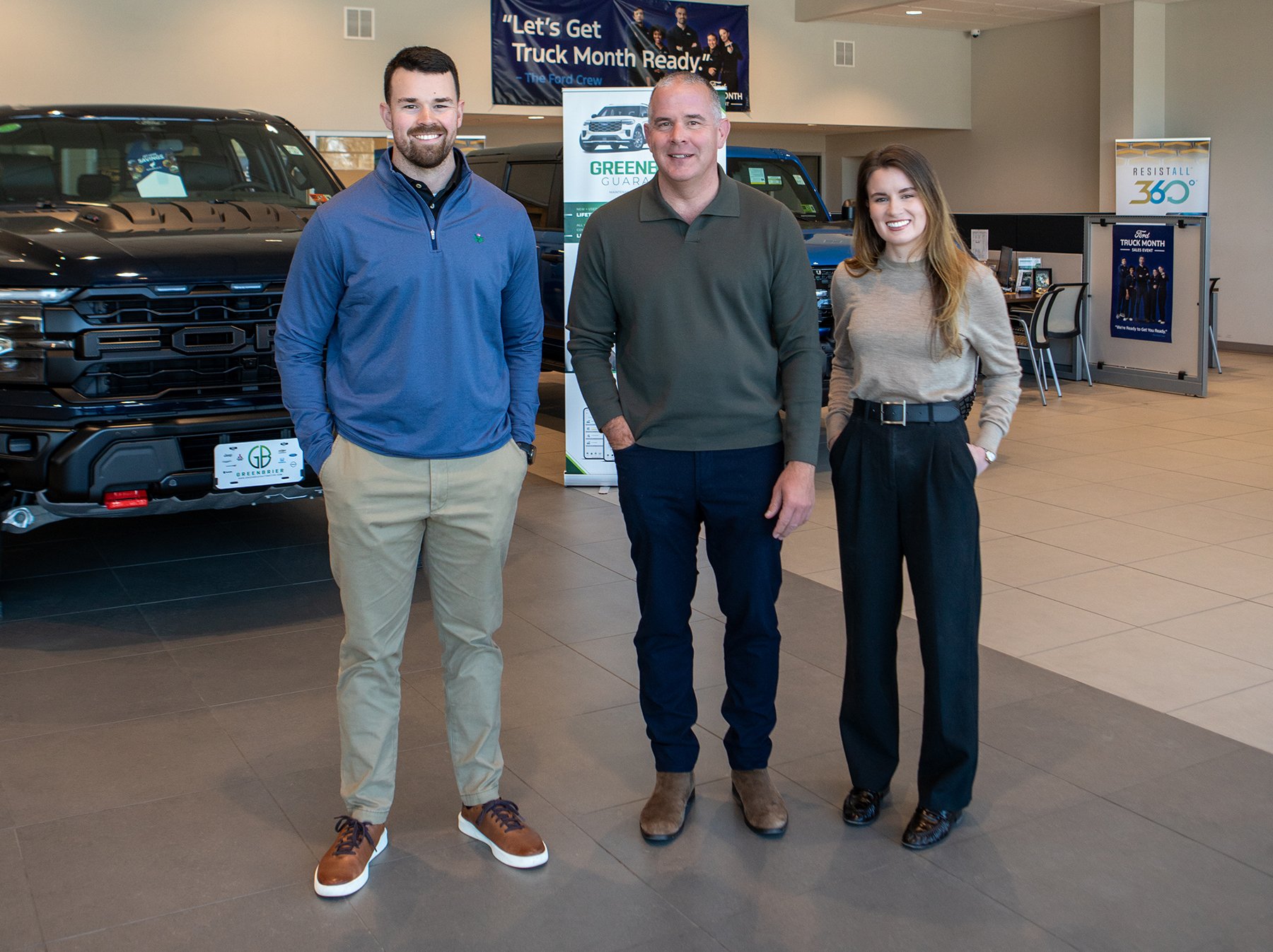Pilgrimage To Dharamsala

BY BARBARA ELLIOTT
Imagine getting a call out of the blue offering you an opportunity to undertake the number one adventure on your bucket list. Would you hesitate?
Lewisburg psychotherapist Hanno Kirk and his wife, Jo Weisbrod, a mental health counselor, certainly did not. They were stunned in the summer of 2015 when a professional colleague of Hanno’s called with just such an offer: Did they want to travel to Dharamsala, India, home of the Dalai Lama and headquarters of the Central Tibetan Administration (the Tibetan government in exile), to attend a training session taught by the Dalai Lama?
They did, and the journey proved to be a profoundly spiritual experience for the couple, who have been practicing Buddhist meditation for many years. Even better, thanks to a totally unexpected private meeting with the Dalai Lama, the trip also opened doors to a scientific exchange that has the potential to profoundly affect others as well.
Both Hanno and Jo were attracted to Buddhism early on because it provides a system of thoughts and principles that coexist with other religions. In fact, Hanno jokingly calls himself a BuddheoPresbyterian, because for years he has sung in the choir at the Old Stone Presbyterian Church on Sunday mornings, and he and Jo are part of a small group who gather in Lewisburg for silent Buddhist meditation on Sunday afternoons.
“The Dalai Lama insists that it is not a religion. It is a set of ethical principles, and if you can logically conclude that they work for you, you can follow them,” Hanno explained. He finds it appealing that the Dalai Lama encourages his followers to keep exploring and does not wish to be worshipped, only venerated.
Hanno’s work in the field of neurofeedback was the catalyst that set the two delighted pilgrims on the road to Dharamsala. He has described the therapy as “basically nudging the brain to learn how to self-regulate itself.” He uses the technique, which involves extensive questioning to determine what issues are influencing a client’s behavior to determine what area of the person’s brain is over-aroused, under-aroused or unstable. He then connects electrodes to different areas of the client’s scalp and introduces a variety of stimuli such as music, videos, and even games and uses a computer to essentially “listen to the brain” to get feedback on how the brain is reacting.
Although neurofeedback therapy has not been wholly embraced by Western medicine, Hanno and other practitioners find it very effective in treating a wide range of patients, including veterans suffering from Post-Traumatic Stress Disorder, children and adolescents with Attention Deficit/Hyperactivity Disorder, and people with autism. The therapy has the effect of calming the mind that Hanno finds to be a natural fit with the healing effects of Buddhist meditation. For that reason, he thought the Dalai Lama, known for his keen interest in neuroscience, would enjoy reading a new book that Hanno edited and contributed to called Restoring the Brain: Neurofeedback as an Integrative Approach to Health.
It was through an online community of fellow practitioners that Hanno had come to know Minh Chau Le. Minh, a Vietnamese woman who extended the invitation, gave him the chance to put the book into His Holiness’s hands. She invited Jo and Hanno to join her as part of her delegation to the Southeast Asian Teaching Event in Dharamsala last September.
When Hanno approached Jo with a “very funny look on his face” to tell her of the invitation, Jo was stunned. “My whole world just turned around,” she said.
The training was held in the Dalai Lama’s temple, where around 800 delegates, primarily from Southeast Asia, congregated. They had to arrive at the temple at 6:30 a.m. each day to undergo an extensive security check before they could enter the hall.
“Security was extremely tight, which was alright because of the threats to his life,” Jo said. If you brought a bottle of water, you had to open it and drink from it to make sure it wasn’t something you were going to throw on him.” Hanno added that they even checked his pens to make sure they didn’t contain poison darts.
Fortunately for the Americans, simultaneous translation into English was available through FM receivers during the sessions, although there were few English-speaking attendees. Even so, a few concepts got lost in the translation.
“There was a lot of discussion about egg crates,” Jo laughed. “I was puzzled until the third day when it finally struck me they were saying ‘aggregates.’”
In addition to attending the training, Minh also planned for the couple to visit the Men Tsee Kahang Clinic of Tibetan Medicine, where last year a delegation of Neurofeedback instructors provided training for five doctors and then donated neurofeedback equipment. Their thought was that Tibetan monks who had been traumatized by their treatment at the hands of the Chinese could benefit from the therapy.
“Our expectations were only to attend the retreat and talk to the doctors. That was as far as my hopes went. We had no idea of interacting with His Holiness,” Hanno said.
The first hint that this visit was going to exceed their expectations came when they discovered that Minh had obtained VIP passes so that they could sit on the stage just feet away from the teaching throne where the Dalai Lama sat as he conducted the training.
A bigger surprise came during a break on the first day. Jo had left the stage when Hanno found himself standing only about eight feet away from the Dalai Lama.
“He was on his throne, looking kind of bored. And he looked at me, and I looked at him, and we both smiled and then he waved me over and asked who I was. I told him who I was and that I was there for the teaching. But I also said I had this book on neurofeedback and I knew of his interest in neuroscience, and I wanted to tell him how it could apply to Tibetan medicine. And I explained about the five Tibetan medical doctors who had been trained last year. He was very interested, and I told him I would like a chance to talk to him more about this,” Hanno recalled.
That encounter was already much more that he had dared hope for. Little did he realize that an even more important meeting lay ahead. At 6:30 the following Sunday the couple was aroused by a phone call asking if they could be at the security check by 8 a.m. His Holiness wanted to speak with them privately. The timing was perfect, because in the interval since Hanno’s conversation with him on the previous day, he had discovered another topic to discuss.
During the visit to the Men Tsee Kahang Clinic, Mihn and her colleagues had been distressed to learn that despite the donated equipment and training, the Tibetan doctors had only used neurofeedback to treat a about 20 patients in the year since the Vietnamese delegation’s last visit.
“The doctors explained that they were so busy and overworked that they felt guilty taking 35 to 45 minutes for a neurofeedback session when they could see four or five patients in that time,” Hanno said, adding that their extremely small offices and frequent electrical outages did not lend themselves to conducting the therapy.
To his surprise, the doctors also reported that they saw very few cases of PTSD, and they theorized that because the Tibetan monks embrace the Buddhist belief that suffering is an important aspect of life, and they deal with it very effectively through meditation, they are not as prone to the disorder. The doctors did agree that neurofeedback would be helpful in treating patients with asthma, migraines, autism, traumatic brain injury, and other conditions, but the time and space problems were prohibitive.
The visitors proposed a solution that would bring non-doctors, such as nurses and social workers, to the United States for training in how to conduct the therapy, and to move the neurofeedback sessions to a separate location. Now, all they needed were resources to make that possible. It occurred to them that the Dalai Lama might be able to help.
During their 20-minute private meeting with the Dalai Lama, Hanno, Jo and Minh had an opportunity to make their case. Thankfully, His Holiness spoke English fluently, and his assistants helped out if he had difficulty with a word.
“He could see almost immediately how neurofeedback could be an adjunct to traditional Tibetan medicine,” Hanno said. “I explained that there is a common goal between Buddhism and neurofeedback, and that is to calm and balance the mind. When you have calmed and balanced the mind, then you can focus on other things such as developing compassion, love, and caring for others.”
When Hanno went on to explain that the therapy can be effective within a relatively short period of time—major changes can be seen with some patients after only 20 sessions—His Holiness revealed a delightful sense of humor. He suggested that they might want to share the technique with the United Nations and try it out on Putin, Assad, and that “troublesome little boy from North Korea.” He also asked whether Hanno was saying that neurofeedback could accomplish in a week what it took Tibetan monks 50 years to do. Everyone got a good laugh from that one.
The visitors then explained the situation at the clinic and the need to train new practitioners. “He thought for a nanosecond, and then he said, ‘This is a mission. I want to do this.’ Then he turned to one of his secretaries and said, ‘I can do this, I can do this.’” Jo recalled.
At the conclusion of their session, His Holiness blessed the three guests and gave each one a small golden Buddha, something he rarely does, Hanno was told. He then presented them with white silk ceremonial scarves, or khatas, that he had blessed, and took each person’s hands and put them to his forehead.
“We floated out of there,” Jo said.
The trip was transformational for the couple, who think of themselves as pilgrims because they are not experts but merely seekers on their own path. They are still absorbing the enormity of the experience, the lessons learned, and the potential good that could come of their encounter with His Holiness, now that the clinic doctors know of the Dalai Lama’s interest in supporting their work.
As they were leaving the Dalai Lama’s office after he had offered his blessings, Minh asked Hanno and Jo if they knew what the blessings meant. “He passed the blessing onto you,” she explained. “Now it is up to you to pass it along to others.”
Jo and Hanno will give a presentation on their experience with the Dalai Lama at the Shepherd’s Center in Lewisburg early in Spring 2016.




